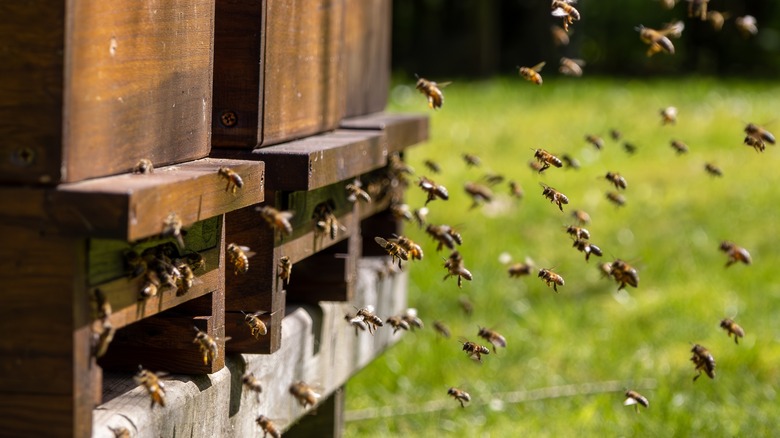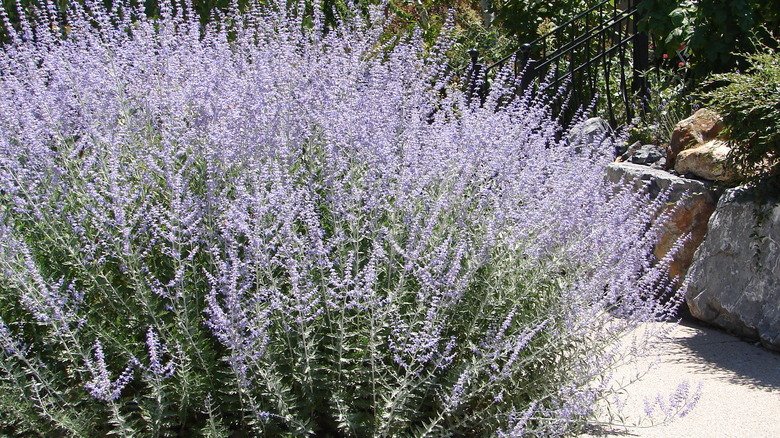Attract Bees To Your Yard With This Drought-Tolerant Garden Favorite
There's a shrub that's all but taken over one spot in your garden. It took off come late spring, its silvery, fern-like fronds tipped with lavender-esque blooms reaching exuberantly for the sky. Bees flock to it in such numbers that their buzzing can be heard from the other side of your garden. We're talking, of course, about the drought-tolerant, Asia-native Russian sage (Salvia yangii, previously known as Perovskia atriplicifolia). With the numbers of pollinating insects declining, in particular (but not limited to) the all-important honey bee, backyard gardeners can help sustenance-seeking invertebrates survive and — hopefully — thrive once again by cultivating an abundance of nectar and pollen-filled plants.
Few pollinator favorites are so easy to cultivate. Gardeners in USDA Hardiness Zones 4 through 9 can successfully grow Russian sage plants. It's a herbaceous perennial, meaning it can be pruned to the roots once its blooms reside. It almost repels water, so little are its watering needs. In a 2018 pollinator count conducted by Rutgers University researchers, Russian sage numbered among a handful of perennials most frequently visited by bees in California. In fact, it's popular with loads of different pollinators, from butterflies to hoverflies to hummingbirds. When it comes to bees, though, we're not just talking about only the honey-making kind. The plant is known to attract leafcutter bees, bumble bees, carpenter bees, and other native buzzers.
Why bees love it
Garden experts now know pollinators are more attracted to flowering perennials than annuals. (Annuals are cultivated to look good to humans rather than for their bee-attracting blooms.) Russian sage is a perennial and a low-maintenance one at that. What's more, its flowers are the right color and shape — purple and tubular. Bees prefer white, blue, and violet flowers. The flowers aren't just long and thin; they also contain high volumes of luscious nectar and indents on the lips of the tubes that act as bee landing platforms. Bees also have a habit called flower constancy — they favor the same-shaped flower in any particular part of a garden. The tendency of Russian sage to grow like a lavender-hued cumulus cloud encourages bees to stay put. Finally, it blooms late into the fall, which is a time when bees are frantically looking for every and all blooms to harvest from to stock their winter larder.
Don't fret if you see a few dead bees on your plant — it's all part of playing host to a pollinator-friendly garden. Assassin beetles and other insectivorous predators know how attractive Russian sage is to bees and lie in wait on the blooms to snag an unsuspecting meal. Plus, trying to dissuade the beetles with organic or chemical pesticides will do far more harm to the bees. To get the most out of your Russian sage patch, pair the shrub with other plants pollinators love, like coneflowers, black-eyed Susans, and milkweed.

